ApronsThe apron was worn in the front while the skirt wrapped around the back. Photos from the early 1900s often show them being worn backwards to highlight the details on the back of the dresses. Ceremonial outfits include a variety of pieces that are made up of materials including dentalium, seed, and bead necklaces, hair ties, basketry caps, and sometimes sashes with woodpecker scalps. The aprons vary in design and materials with some aprons being very plain to others being very elaborate. Two examples of aprons are on display, one is a plain but detailed deerskin apron while the other is made up of hundreds of strands of blue trade beads with bells and beargrass. |
Deerskin Apron
Trade Bead and Bell Apron
Skirts
Hair Ties | |
| Hair ties like these are typically worn as part of dance regalia. They also feature a mix of traded and naturally found materials, with blue and gold beads and pine nuts. When danced, the sounds of the shells, seeds, nuts and beads on the regalia add to the music being played and sung in the ceremonies. |

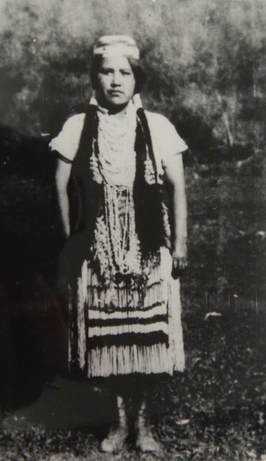
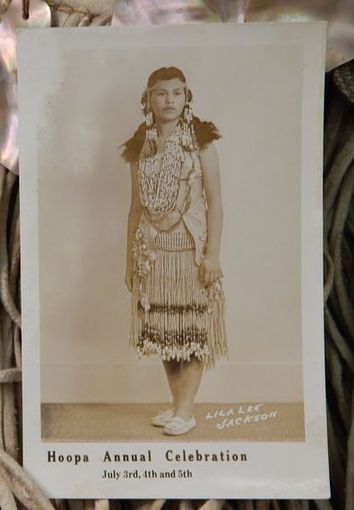
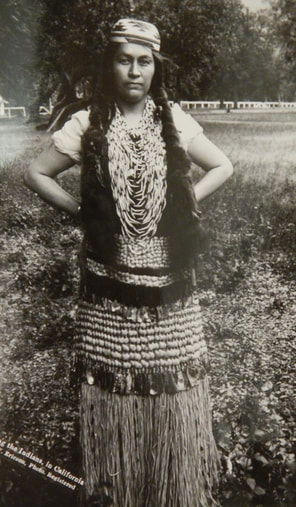
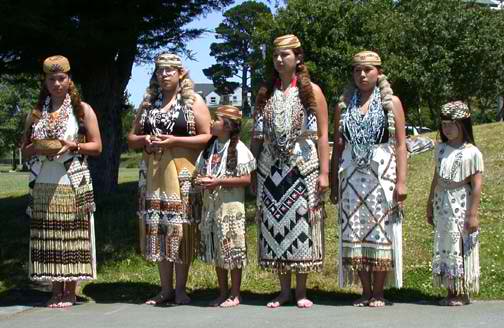
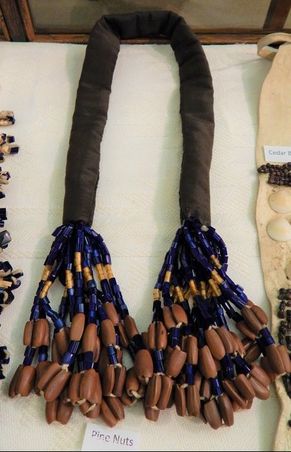
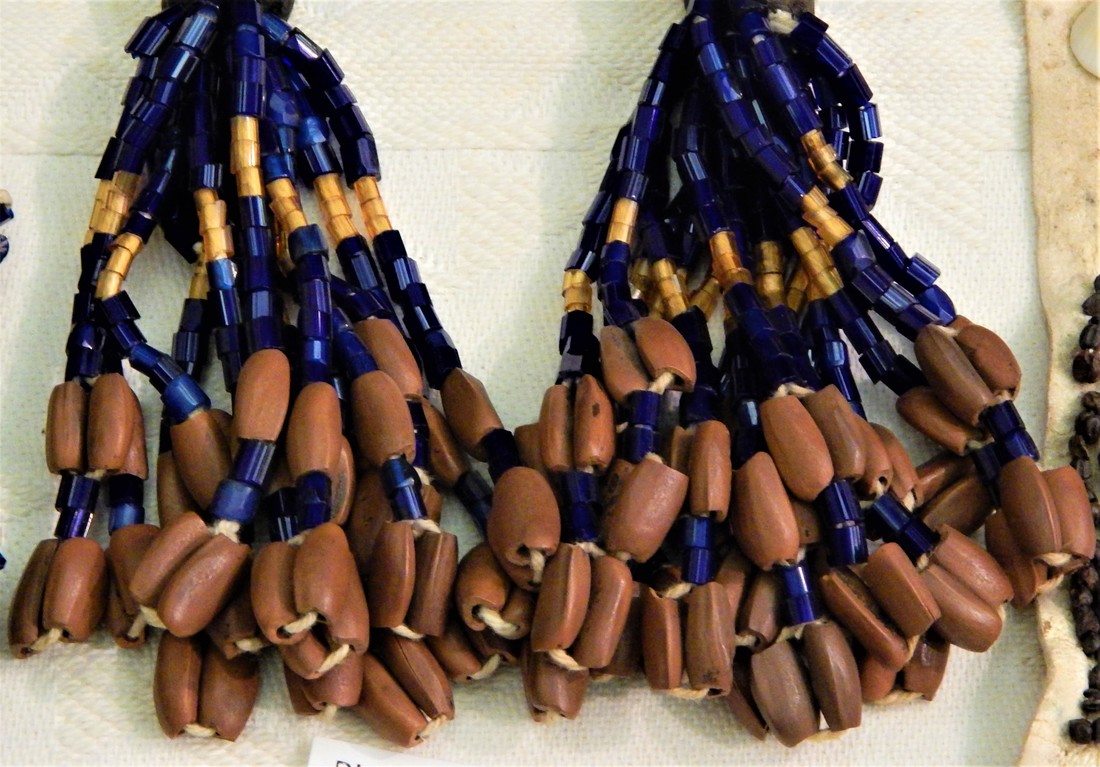
 RSS Feed
RSS Feed